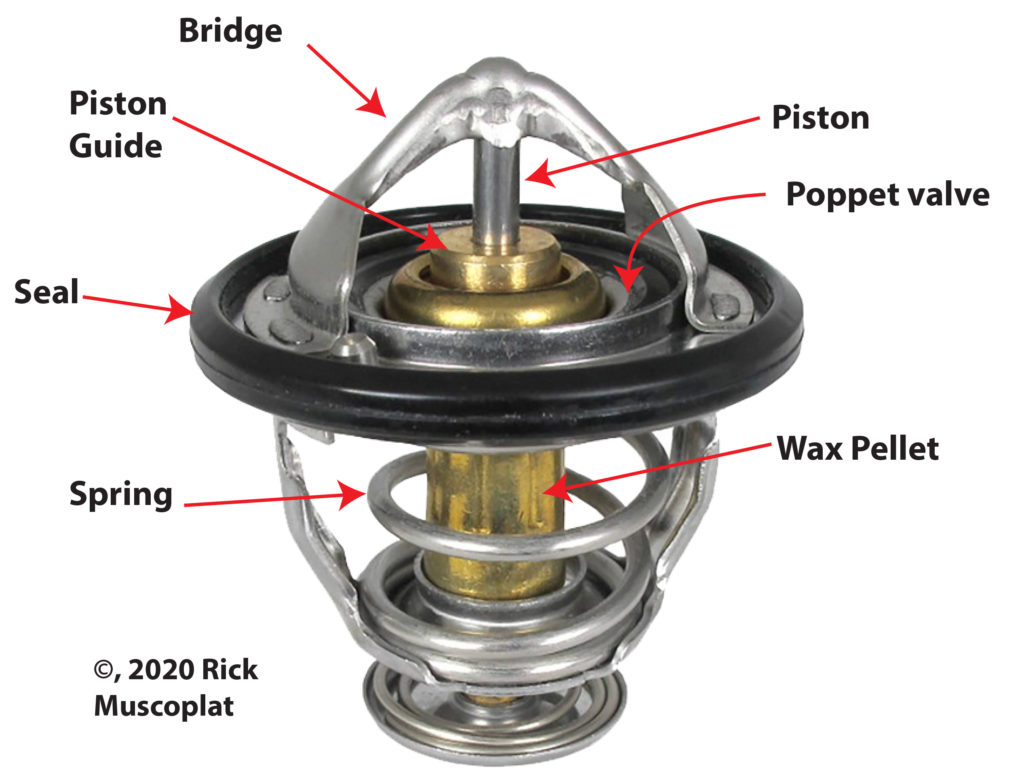The thermostat is a critical component of a vehicle’s cooling system, responsible for regulating the engine’s temperature. The engine generates a considerable amount of heat as it operates, and if left unchecked, the heat can damage various engine components. The thermostat manages the coolant flow through the engine to maintain a constant operating temperature. This article will discuss the function of the thermostat, how it works, common problems, and signs of failure.
Function of the Thermostat
The thermostat’s primary function is to regulate the engine’s temperature by controlling the flow of coolant through the engine. It does this by opening and closing a valve that allows the coolant to flow through the engine or bypass it. The thermostat is typically located between the engine and the radiator in a housing that allows it to monitor the engine’s temperature.
When the engine is cold, the thermostat remains closed, preventing the coolant from flowing through the engine. This restriction causes the engine to warm up more quickly, increasing fuel efficiency and reducing emissions. As the engine temperature rises, the thermostat gradually opens, allowing the coolant to flow through the engine and into the radiator, where it is cooled.
The thermostat’s role is essential for maintaining the engine’s operating temperature. If the engine gets too hot, it can cause various problems, including overheating, damage to engine components, and reduced engine performance.
How Does the Thermostat Work?
The thermostat contains a wax pellet that expands and contracts with temperature changes. The wax pellet is enclosed in a cylinder that is connected to the valve that controls the flow of coolant. When the engine is cold, the wax pellet contracts, keeping the valve closed, preventing the coolant from flowing through the engine. As the engine warms up, the wax pellet expands, pushing on a rod that opens the valve, allowing the coolant to flow through the engine.
The thermostat’s design can vary depending on the manufacturer and the vehicle’s make and model. Some thermostats use a spring to control the valve, while others use a bimetallic strip or an electronic control module.
Common Problems
Like any other component in a vehicle’s cooling system, the thermostat can fail over time. Some common problems with the thermostat include:
- Stuck Open: If the thermostat gets stuck in the open position, the coolant will flow continuously through the engine, causing it to run cooler than intended. This can cause reduced fuel efficiency and increased emissions.
- Stuck Closed: If the thermostat gets stuck in the closed position, the coolant cannot flow through the engine, causing it to overheat. This can cause significant engine damage if left unchecked.
- Improper Calibration: If the thermostat is not calibrated correctly, it can cause the engine to run too hot or too cold, resulting in reduced fuel efficiency and increased emissions.
Signs of Failure
It’s essential to recognize the signs of a failing thermostat to prevent engine damage and maintain optimal engine performance. Some common signs of a failing thermostat include:
- Overheating: If the engine is overheating or running hotter than usual, it could be a sign that the thermostat is failing.
- Low Engine Temperature: If the engine is not reaching its normal operating temperature or takes longer than usual to warm up, it could be a sign of a faulty thermostat.
- Poor Fuel Economy: If the engine is running too cold, it can cause reduced fuel efficiency, resulting in increased fuel consumption.
- Coolant Leaks: If you notice coolant leaks around the thermostat housing or the radiator, it could be a sign that the thermostat is failing.
Conclusion
The thermostat is a critical component of a vehicle’s cooling system, responsible for regulating the engine’s temperature. It opens and closes a valve to control the flow of coolant through the engine to maintain a constant operating temperature. The thermostat can fail over time,
leading to issues such as overheating and poor engine performance. It is important to regularly maintain and replace the thermostat to ensure the longevity and proper functioning of the vehicle.
When choosing a thermostat for replacement, it is important to consider factors such as the correct temperature range, the type of valve used, and compatibility with the vehicle’s make and model. It is recommended to purchase a thermostat from a reputable brand and to follow the manufacturer’s instructions for installation.
Overall, the thermostat plays a crucial role in the proper functioning of a vehicle’s cooling system. Regular maintenance and replacement can help prevent costly repairs and ensure the longevity of the vehicle.

